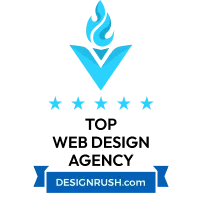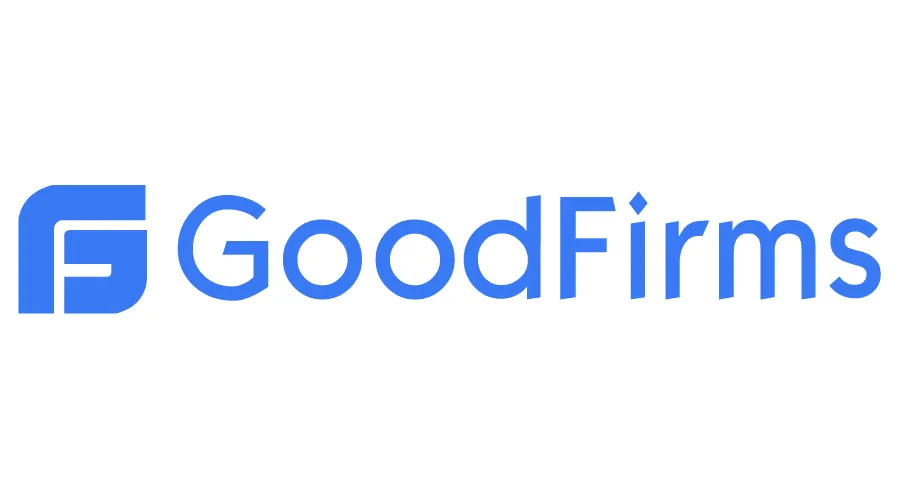- Services
- Case Studies
- Technologies
- NextJs development
- Flutter development
- NodeJs development
- ReactJs development
- About
- Contact
- Tools
- Blogs
- FAQ
CSS border-block-start-color Enhance Web Design
Useful for responsive designs, it adapts to writing modes and directions.
Available options include specific colors and global values.
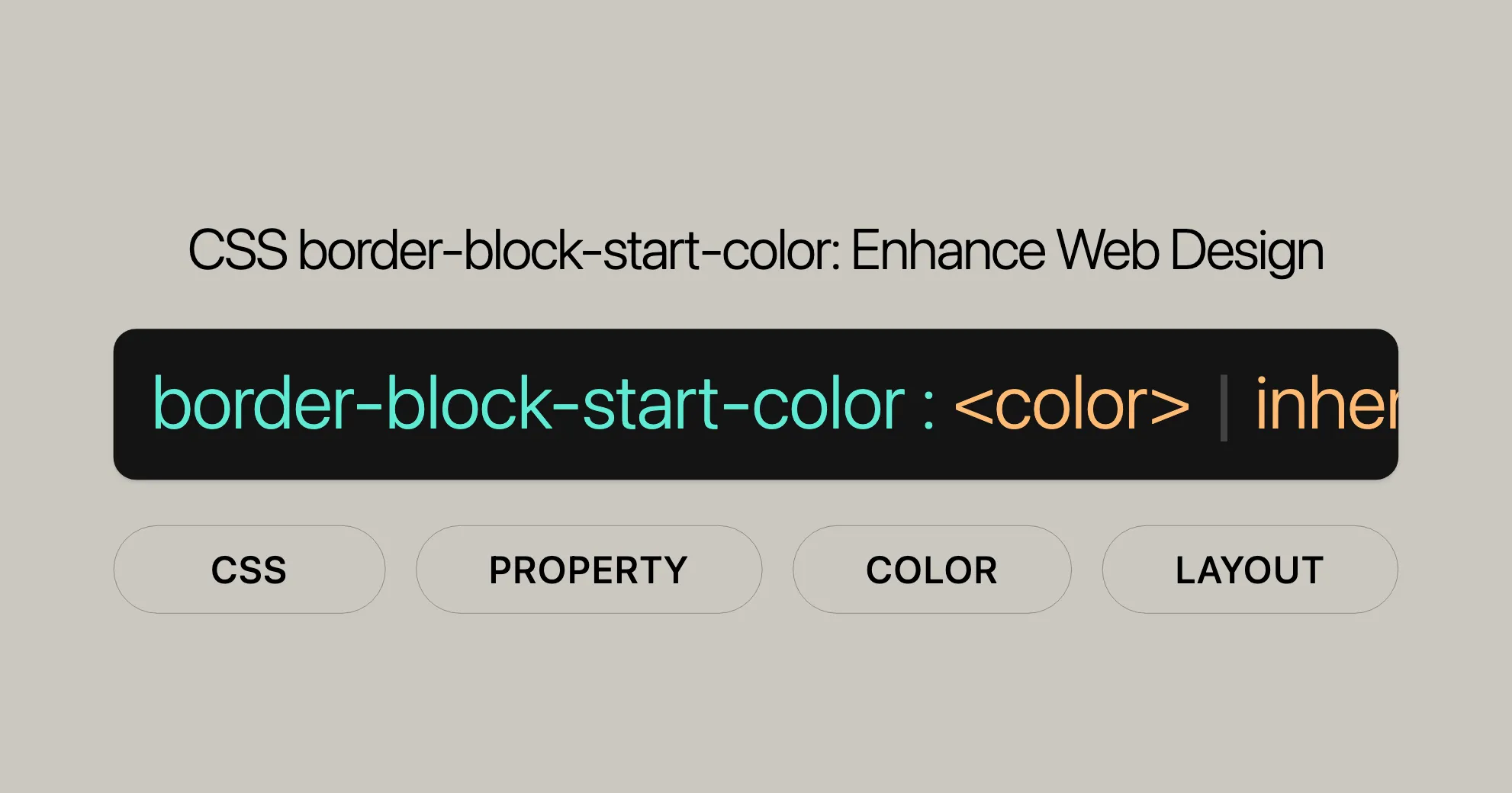
Syntax
The border-block-start-color property in CSS is used to set the color of the logical block-start border of an element. This property can take various values, including specific colors and global values. Below is the syntax for using border-block-start-color:
border-block-start-color: blue;border-block-start-color: #4c5d21;
/* Global values */border-block-start-color: inherit;border-block-start-color: initial;border-block-start-color: revert;border-block-start-color: revert-layer;border-block-start-color: unset;Values
The border-block-start-color property accepts the following values:
<color>: This value specifies the color of the border. It can be any valid CSS color value, including named colors, hex codes, RGB, RGBA, HSL, HSLA, and more.
Example:
border-block-start-color: blue;border-block-start-color: #4c5d21;- Global values: These values include
inherit,initial,revert,revert-layer, andunset. They are used to control the inheritance and resetting of the property.
Example:
border-block-start-color: inherit;border-block-start-color: initial;border-block-start-color: revert;border-block-start-color: revert-layer;border-block-start-color: unset;Formal Definition
The border-block-start-color property in CSS defines the color of the logical block-start border of an element. This property is highly adaptable and maps to different physical border colors based on the element’s writing mode, directionality, and text orientation. Here are the key details of its formal definition:
- Initial Value:
currentcolor - Applies to: All elements.
- Inherited: No.
- Computed Value: Computed color.
- Animation Type: By computed value type.
The formal syntax for border-block-start-color is as follows:
border-block-start-color = <color>Where:
<color>: This value specifies the color of the border. It can be any valid CSS color value, including named colors, hex codes, RGB, RGBA, HSL, HSLA, and more.
Examples
The border-block-start-color property in CSS is a versatile tool for customizing the appearance of borders in web design. Below are some examples to illustrate how this property can be used to enhance the visual appeal of elements.
Example 1: Basic Usage
This example demonstrates how to set the border-block-start-color for a simple HTML element.
HTML
<div> <p class="exampleText">Example text</p></div>CSS
div { background-color: yellow; width: 120px; height: 120px;}
.exampleText { border: 10px solid blue; border-block-start-color: red;}Result
In this example, the border-block-start-color is set to red, which will affect the top border color of the text element based on the default writing mode.
Example 2: Vertical Text
This example shows how to use border-block-start-color with vertical text.
HTML
<div> <p class="exampleText">Example text</p></div>CSS
div { background-color: yellow; width: 120px; height: 120px;}
.exampleText { writing-mode: vertical-lr; border: 10px solid blue; border-block-start-color: red;}Result
In this example, the writing-mode is set to vertical-lr, which makes the text flow vertically from top to bottom. The border-block-start-color is set to red, affecting the left border color in this vertical layout.
Example 3: Global Values
This example illustrates the use of global values with border-block-start-color.
HTML
<div> <p class="exampleText">Example text</p></div>CSS
div { background-color: yellow; width: 120px; height: 120px;}
.exampleText { border: 10px solid blue; border-block-start-color: inherit;}Result
In this example, the border-block-start-color is set to inherit, which means it will inherit the border color from its parent element. This can be useful for maintaining a consistent design across multiple elements.
These examples demonstrate how the border-block-start-color property can be used to create dynamic and responsive border colors in web design. By utilizing this property, you can ensure that your designs are visually appealing and adaptable to different writing modes and directions.
Browser Compatibility
The border-block-start-color property is widely supported across many devices and browser versions. It has been available since September 2021, ensuring that it works seamlessly across different platforms and environments. Here is a summary of the browser compatibility for this property:
- Chrome: Supported since version 69.
- Firefox: Supported since version 41.
- Opera: Supported since version 56.
- Edge: Supported since version 79.
- Safari: Supported since version 12.1.
For the most up-to-date information on browser compatibility, you can refer to the official MDN Web Docs page or the Can I Use website.
Related Properties
The border-block-start-color property is part of a broader set of CSS properties that define the colors of the logical borders of an element. These properties are designed to work together to create cohesive and responsive layouts. Below are some related properties that you might find useful in web development and design:
- border-top-color: Sets the color of the top border.
- border-right-color: Sets the color of the right border.
- border-bottom-color: Sets the color of the bottom border.
- border-left-color: Sets the color of the left border.
- writing-mode: Defines the writing mode, affecting how borders are applied.
- direction: Defines text direction, influencing border application.
- text-orientation: Defines text orientation, impacting border usage.
Examples
Here are some examples of how to use these properties:
border-block-end-color: green;border-inline-start-color: purple;border-inline-end-color: orange;border-top-color: blue;border-right-color: red;border-bottom-color: green;border-left-color: yellow;writing-mode: vertical-lr;direction: rtl;text-orientation: upright;Supported Browsers
The border-block-start-color property is well-supported across major browsers:
- Chrome: Since version 69.
- Firefox: Since version 41.
- Opera: Since version 56.
- Edge: Since version 79.
- Safari: Since version 12.1.
For the latest browser compatibility info, visit the official MDN Web Docs page or Can I Use.
This wide support makes border-block-start-color a reliable choice for creating consistent and attractive web designs.
 สร้างเว็บไซต์ 1 เว็บ ต้องใช้งบเท่าไหร่? เจาะลึกทุกองค์ประกอบ website development cost อยากสร้างเว็บไซต์แต่ไม่มั่นใจในเรื่องของงบประมาณ อ่านสรุปเจาะลึกตั้งแต่ดีไซน์, ฟังก์ชัน และการดูแล พร้อมตัวอย่างงบจริงจาก Till it’s done ที่แผนชัด งบไม่บานปลายแน่นอน
สร้างเว็บไซต์ 1 เว็บ ต้องใช้งบเท่าไหร่? เจาะลึกทุกองค์ประกอบ website development cost อยากสร้างเว็บไซต์แต่ไม่มั่นใจในเรื่องของงบประมาณ อ่านสรุปเจาะลึกตั้งแต่ดีไซน์, ฟังก์ชัน และการดูแล พร้อมตัวอย่างงบจริงจาก Till it’s done ที่แผนชัด งบไม่บานปลายแน่นอน 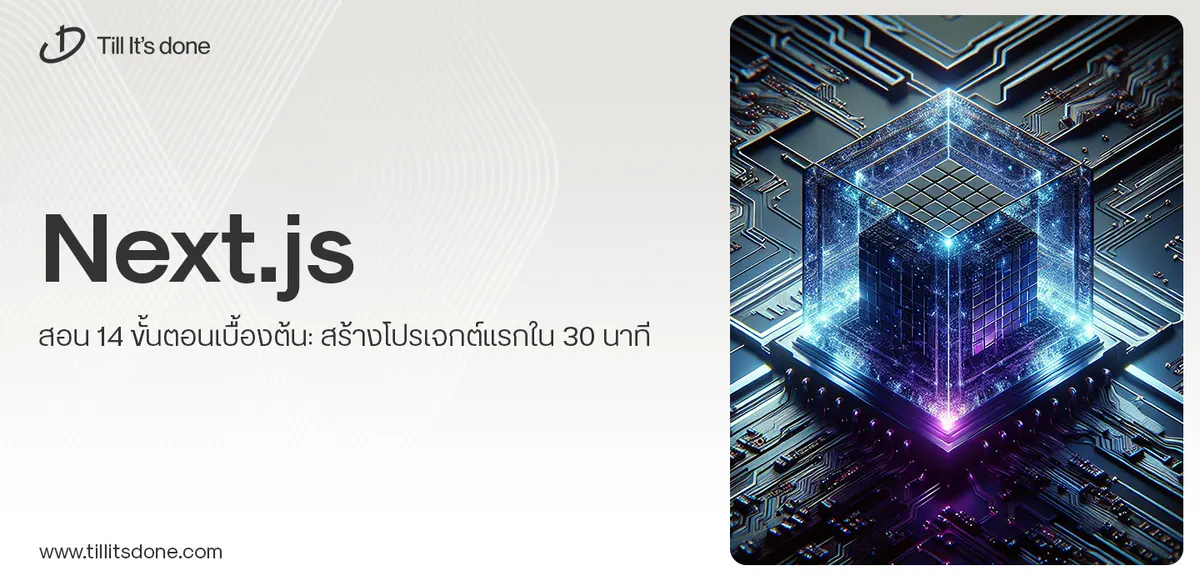 Next.js สอน 14 ขั้นตอนเบื้องต้น: สร้างโปรเจกต์แรกใน 30 นาที เริ่มต้นกับ Next.js ใน 14 ขั้นตอนเพียงแค่ 30 นาที พร้อม SSR/SSG และ API Routes ด้วยตัวอย่างโค้ดง่าย ๆ อ่านต่อเพื่อสร้างโปรเจ็กต์แรกได้ทันทีที่นี่
Next.js สอน 14 ขั้นตอนเบื้องต้น: สร้างโปรเจกต์แรกใน 30 นาที เริ่มต้นกับ Next.js ใน 14 ขั้นตอนเพียงแค่ 30 นาที พร้อม SSR/SSG และ API Routes ด้วยตัวอย่างโค้ดง่าย ๆ อ่านต่อเพื่อสร้างโปรเจ็กต์แรกได้ทันทีที่นี่  วิธีสมัคร Apple Developer Account เพื่อนำแอปขึ้น App Store ทีละขั้นตอน อยากปล่อยแอปบน App Store ระดับโลก มาอ่านคู่มือสมัคร Apple Developer Account พร้อมเคล็ดลับ TestFlight และวิธีอัปโหลดที่ง่ายในบทความเดียวนี้ได้เลย
วิธีสมัคร Apple Developer Account เพื่อนำแอปขึ้น App Store ทีละขั้นตอน อยากปล่อยแอปบน App Store ระดับโลก มาอ่านคู่มือสมัคร Apple Developer Account พร้อมเคล็ดลับ TestFlight และวิธีอัปโหลดที่ง่ายในบทความเดียวนี้ได้เลย 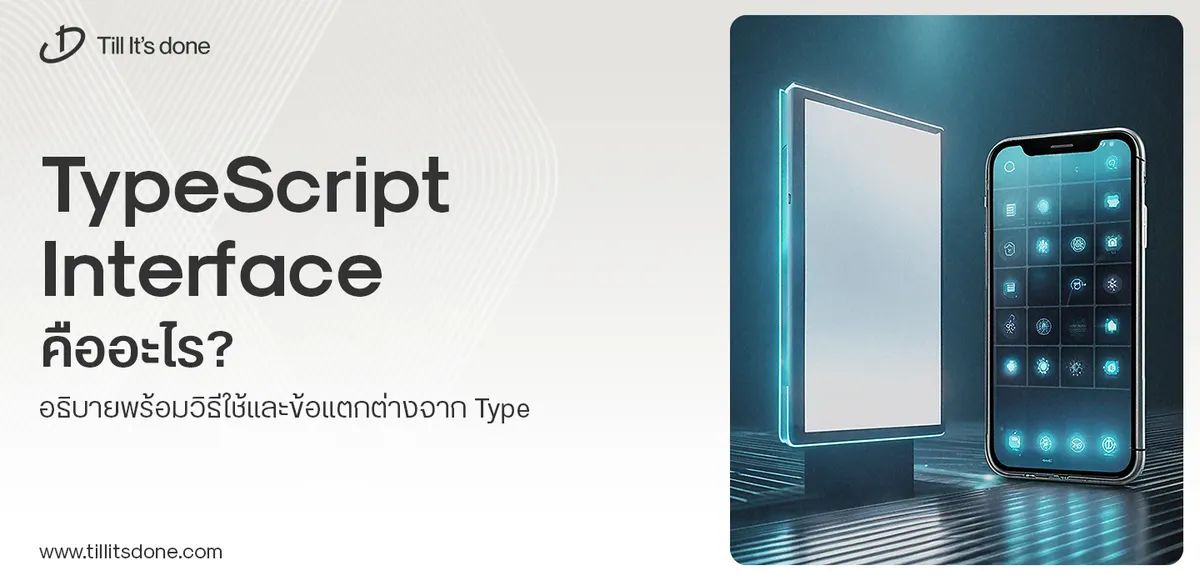 TypeScript Interface คืออะไร? อธิบายพร้อมวิธีใช้และข้อแตกต่างจาก Type เรียนรู้วิธีใช้ TypeScript Interface เพื่อสร้างโครงสร้างข้อมูลที่ปลอดภัยและเข้าใจง่าย พร้อมเปรียบเทียบข้อดีข้อแตกต่างกับ Type ที่คุณต้องรู้ ถูกรวมเอาไว้ในบทความนี้แล้ว
TypeScript Interface คืออะไร? อธิบายพร้อมวิธีใช้และข้อแตกต่างจาก Type เรียนรู้วิธีใช้ TypeScript Interface เพื่อสร้างโครงสร้างข้อมูลที่ปลอดภัยและเข้าใจง่าย พร้อมเปรียบเทียบข้อดีข้อแตกต่างกับ Type ที่คุณต้องรู้ ถูกรวมเอาไว้ในบทความนี้แล้ว 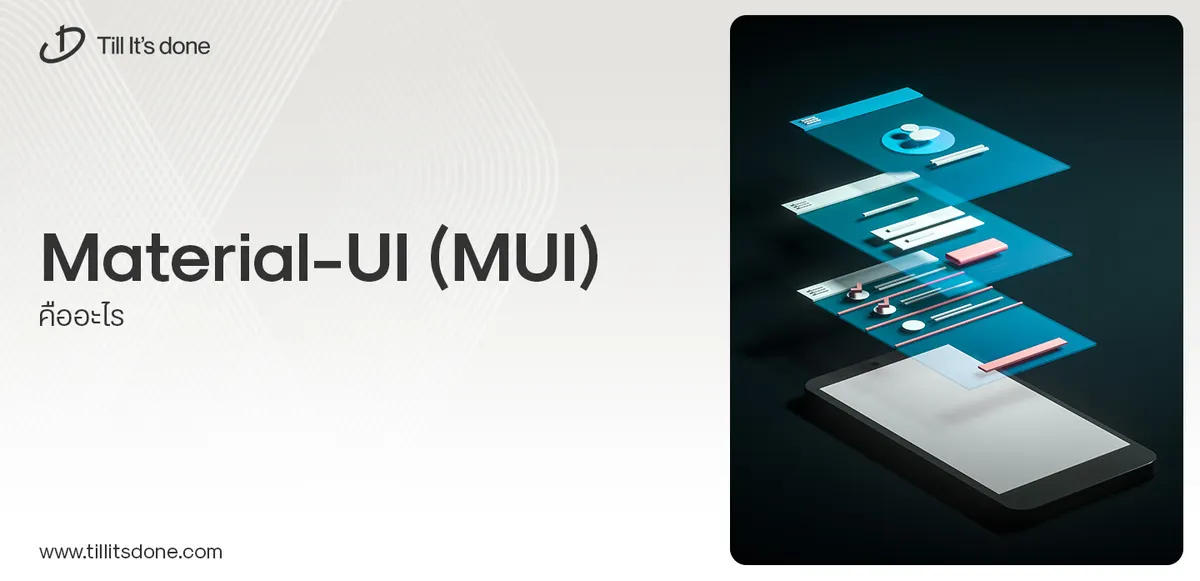 Material-UI (MUI) คืออะไร อยากสร้าง UI สวยงามและเป็นมืออาชีพในเวลาอันรวดเร็วใช่ไหม มาทำความรู้จักกับ Material-UI (MUI) ที่ช่วยให้คุณพัฒนาแอปพลิเคชันบน React ได้ง่ายและดูดีในทุกอุปกรณ์
Material-UI (MUI) คืออะไร อยากสร้าง UI สวยงามและเป็นมืออาชีพในเวลาอันรวดเร็วใช่ไหม มาทำความรู้จักกับ Material-UI (MUI) ที่ช่วยให้คุณพัฒนาแอปพลิเคชันบน React ได้ง่ายและดูดีในทุกอุปกรณ์  เปรียบเทียบ 3 วิธีติดตั้ง install node js บน Ubuntu: NVM vs NodeSource vs Official Repo แบบไหนดีที่สุด? เรียนรู้วิธีติดตั้ง Node.js บน Ubuntu ด้วย NVM, NodeSource หรือ Official Repo เลือกวิธีที่เหมาะกับความต้องการของคุณ พร้อมเปรียบเทียบ เพื่อการพัฒนาที่มีประสิทธิภาพ!
เปรียบเทียบ 3 วิธีติดตั้ง install node js บน Ubuntu: NVM vs NodeSource vs Official Repo แบบไหนดีที่สุด? เรียนรู้วิธีติดตั้ง Node.js บน Ubuntu ด้วย NVM, NodeSource หรือ Official Repo เลือกวิธีที่เหมาะกับความต้องการของคุณ พร้อมเปรียบเทียบ เพื่อการพัฒนาที่มีประสิทธิภาพ! พูดคุยกับซีอีโอ
We'll be right here with you every step of the way.
We'll be here, prepared to commence this promising collaboration.
Whether you're curious about features, warranties, or shopping policies, we provide comprehensive answers to assist you.

